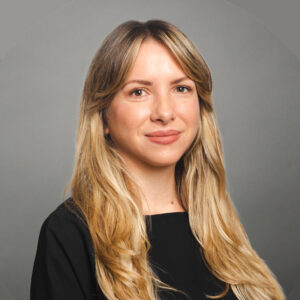Although a relatively new development, brand safety has become a standard condition for digital advertising campaigns. These solutions are meant to protect advertisers from being associated with online content that might harm their reputation.
However, the current technology for determining what counts as “brand safe” is one-dimensional, outdated and has not evolved with advancements in AI. At Newsweek, as much as half of our inventory is being marked as unsafe by a few of the largest brand safety companies.
Journalism outlets are disproportionately impacted by brand safety, as they are demonetized for covering important topics involving difficult or controversial themes. Brand safety technology affects journalists regardless of where the outlet falls on the political spectrum. The free press is being penalized for doing its job.
After some high-profile misses (see here, here and here), the industry has begun to call for change. Brand safety has even risen into the political discourse, with Congress holding hearings on industry standards. Most recently, the issue exploded onto front pages when Elon Musk-owned X filed a lawsuit against the World Federation of Advertisers, which led to the shuttering of GARM.
While Musk’s approach may aim to dismantle the concept entirely, the reality is that brand safety isn’t going away – it’s a critical concern for advertisers. Instead of erasing the idea, we should be developing smarter, more nuanced solutions that protect both news publishers and advertisers.
Keyword blocklisting harms everyone
The material impact of keyword-based brand safety measures on news monetization is profound. High-quality content is often misclassified, resulting in lower CPMs and missed revenue opportunities. This suppresses premium supply from established news brands, forcing advertisers to miss out on high-quality environments.
Automated keyword blocklisting has significant limitations. False positives can result from a misunderstanding of words in context. A recent evaluation found that articles such as “25 Celebrities You Didn’t Know Made Music” were flagged for terms like “lynch” and “dead,” referring to filmmaker David Lynch and his rock band, Dead Man’s Bones.
This suppression drives up prices elsewhere or compels advertisers to source from lower-quality sites. Made-for-advertising (MFA) sites have flourished by bypassing strict brand safety filters. These sites avoid using blocklisted terms, making them appear brand safe to existing tech. As a result, the tech doesn’t protect advertisers from low-quality content designed to game the system.
Advanced brand safety
False positives are only one part of the picture. Journalism that deals with unambiguously difficult topics like war and pandemics also faces challenges. There is an acute need to improve technology to better reflect the true dimensions of brand safety: content, context, credibility and mindset.
Advanced brand safety tech must transcend keyword blocklisting by integrating contextual analysis and mindset consideration for more nuanced and accurate content evaluations. Contextual analysis ensures the true nature of the content is understood by evaluating the source, author’s intent and consumption environment.
Understanding the audience’s mindset – whether in a research-oriented, entertainment-seeking or news-gathering mode – further refines the suitability assessment. Large language models (LLMs) enhance this process by interpreting content with sophisticated nuance beyond simple keyword detection.
Transparency and feedback mechanisms are also critical. Providing clear insights into content classification fosters trust and understanding among advertisers while enabling continuous improvement through user-reported misclassifications.
Ripe for disruption
The current state of brand safety is untenable, but the lack of innovation by dominant players has created a market that’s ripe for disruption.
The ecosystem of brand safety technology providers is top-heavy, with a handful of companies filtering the majority of ad spend. These companies initially focused on verification and viewability, then expanded into brand safety and suitability, but have since prioritized shareholder value over innovation as public companies. Their technology is integrated into every major platform and media exchange. It’s now considered table stakes for any campaign. They have created a defensible niche that has slowed progress.
The company that disrupts this status quo will provide immense value to the media ecosystem. The convergence of technological advancements and a heightened awareness of the issue presents an unprecedented opportunity. This is a moment for the industry to do what it does best: innovate.
A more balanced future
The next leap forward in brand safety measurement is already within view, thanks to a number of organizations tackling this problem head-on.
Newsweek supports Stagwell’s Future of News initiative, which aims to raise awareness about the importance of advertising that supports journalism. We’ve also been working with Ad Fontes Media, which provides advertisers with data to identify good, reputable journalism, moving beyond simplistic news-site or keyword blocking.
Mobian shows great potential to reimagine both brand safety and contextual intelligence. It uses LLMs to develop a deeper and more nuanced understanding of context, including emotion, polarity, sentiment, tonality, veracity and more. Unsurprisingly, Mobian’s measurement reveals that a significant portion of inventory previously marked as unsafe is, in fact, safe for brands.
With smarter, more nuanced brand safety measures, advertisers can invest in news content with confidence, creating a virtuous cycle that benefits everyone: publishers, advertisers and audiences. By working together, we can develop a future where brand safety technology enhances rather than hinders the vital work of the free press.
One does not need to sue brand safety out of existence to make it work better. What we need instead is innovation.
“The Sell Sider” is a column written by the sell side of the digital media community.
Follow Newsweek and AdExchanger on LinkedIn.

















